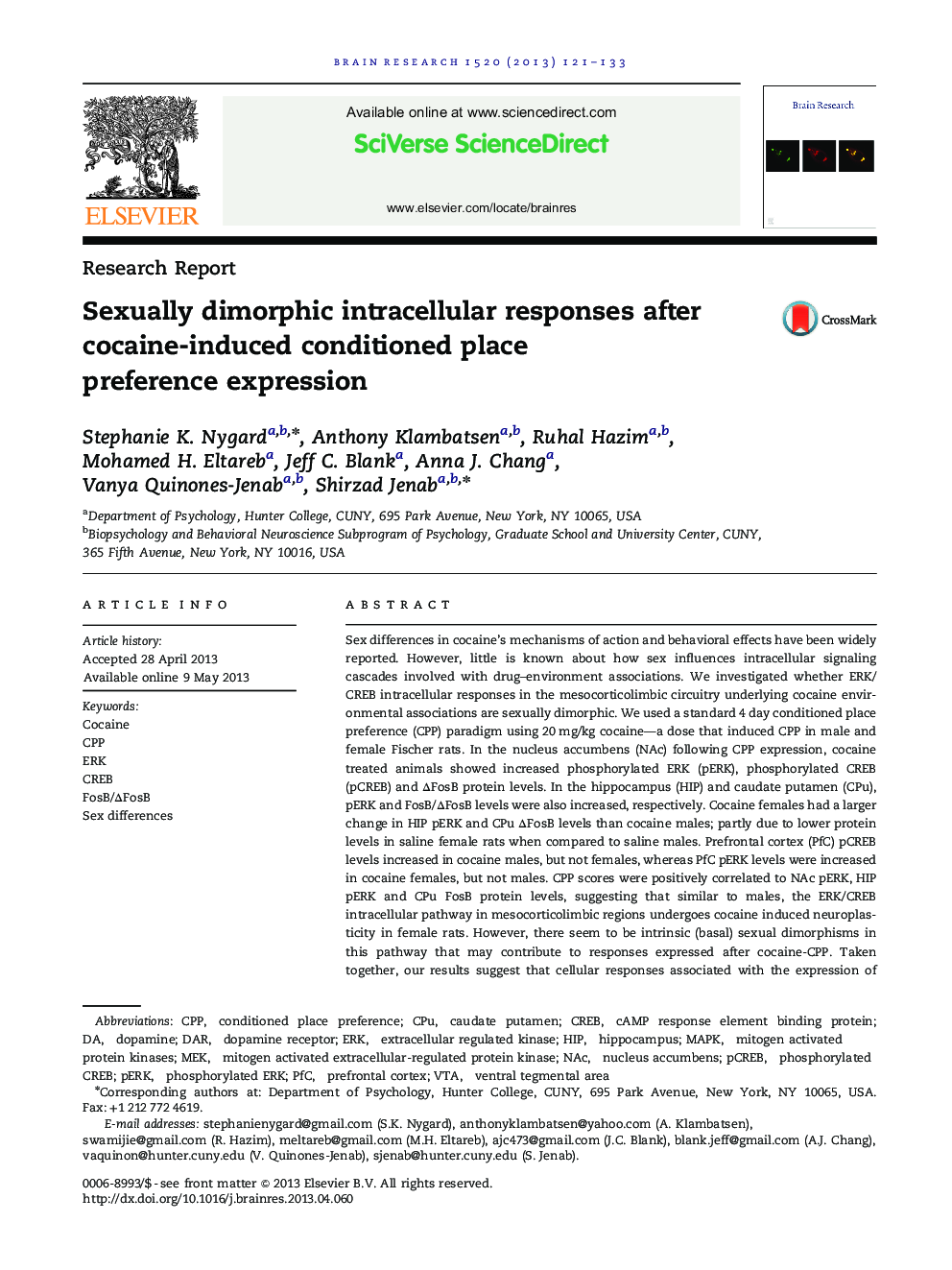| Article ID | Journal | Published Year | Pages | File Type |
|---|---|---|---|---|
| 6263817 | Brain Research | 2013 | 13 Pages |
â¢No sex differences were observed in the expression or magnitude of cocaine CPP.â¢Cocaine females were more active than males and saline controls during CPP testing.â¢Cocaine males and females showed robust increases in NAc pERK, pCREB and ÎFosB.â¢Sexual dimorphisms outside the NAc in ERK/CREB/ÎFosB levels were region specific.
Sex differences in cocaine's mechanisms of action and behavioral effects have been widely reported. However, little is known about how sex influences intracellular signaling cascades involved with drug-environment associations. We investigated whether ERK/CREB intracellular responses in the mesocorticolimbic circuitry underlying cocaine environmental associations are sexually dimorphic. We used a standard 4 day conditioned place preference (CPP) paradigm using 20Â mg/kg cocaine-a dose that induced CPP in male and female Fischer rats. In the nucleus accumbens (NAc) following CPP expression, cocaine treated animals showed increased phosphorylated ERK (pERK), phosphorylated CREB (pCREB) and ÎFosB protein levels. In the hippocampus (HIP) and caudate putamen (CPu), pERK and FosB/ÎFosB levels were also increased, respectively. Cocaine females had a larger change in HIP pERK and CPu ÎFosB levels than cocaine males; partly due to lower protein levels in saline female rats when compared to saline males. Prefrontal cortex (PfC) pCREB levels increased in cocaine males, but not females, whereas PfC pERK levels were increased in cocaine females, but not males. CPP scores were positively correlated to NAc pERK, HIP pERK and CPu FosB protein levels, suggesting that similar to males, the ERK/CREB intracellular pathway in mesocorticolimbic regions undergoes cocaine induced neuroplasticity in female rats. However, there seem to be intrinsic (basal) sexual dimorphisms in this pathway that may contribute to responses expressed after cocaine-CPP. Taken together, our results suggest that cellular responses associated with the expression of learned drug-environment associations may play an important role in sex differences in cocaine addiction and relapse.
